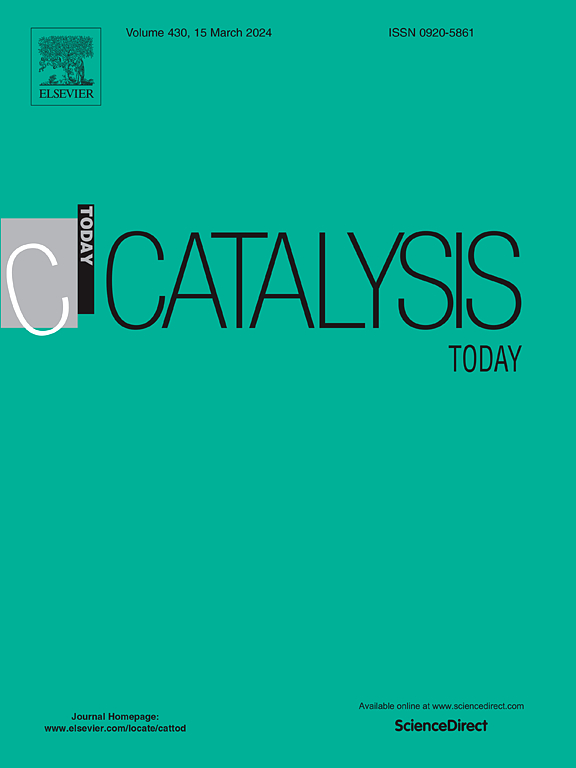Solar-promoted photo-thermal CO2 methanation on SiC/hydrotalcites-derived catalysts
IF 5.2
2区 化学
Q1 CHEMISTRY, APPLIED
引用次数: 0
Abstract
The photothermo-catalysis is a combined multicatalytic approach that allows to overcome some drawbacks of the respective single catalytic processes as the thermocatalysis and the photocatalysis. In this work, to efficiently exploit the potentiality of the solar photothermo-catalysis, SiC/hydrotalcites-derived catalysts were prepared with a simple hydrothermal method to exploit both the thermocatalytic properties of the formed multifunctional mixed oxides and the photo(thermo)-catalytic features of the silicon carbide. Two different hydrotalcite-derived catalysts were prepared, one with Mg-Co ions and another with Zn-Co ions. This latter sample, after the addition of SiC, showed the best performance in the CO2 methanation reaction, with a CH4 selectivity maximum of 71 % in the photothermal conditions at 250 °C, strongly improving the performance of the thermocatalysis (36 % at 350 °C). The presence of SiC permitted to increase the harvesting of the solar light, to modify the basic sites of the hydrotalcite-derived catalysts, allowing an efficient CO2 activation, and to generate self-heating effects that enhanced the photo-driven thermocatalysis. Moreover, the formation of photocatalytic active species as the ZnO and the ZnAl2O4 after the calcination of the corresponding hydrotalcite precursor, led to exploit additional photocatalytic contributions to further increase the catalytic activity in the photo-promoted thermocatalytic CO2 conversion into methane. The high versatility and the several synergisms generated by the application of this hybrid catalysis with these peculiar SiC/hydrotalcite-derived catalysts can be a sustainable strategy to efficiently valorise the carbon dioxide.
求助全文
约1分钟内获得全文
求助全文
来源期刊

Catalysis Today
化学-工程:化工
CiteScore
11.50
自引率
3.80%
发文量
573
审稿时长
2.9 months
期刊介绍:
Catalysis Today focuses on the rapid publication of original invited papers devoted to currently important topics in catalysis and related subjects. The journal only publishes special issues (Proposing a Catalysis Today Special Issue), each of which is supervised by Guest Editors who recruit individual papers and oversee the peer review process. Catalysis Today offers researchers in the field of catalysis in-depth overviews of topical issues.
Both fundamental and applied aspects of catalysis are covered. Subjects such as catalysis of immobilized organometallic and biocatalytic systems are welcome. Subjects related to catalysis such as experimental techniques, adsorption, process technology, synthesis, in situ characterization, computational, theoretical modeling, imaging and others are included if there is a clear relationship to catalysis.
 求助内容:
求助内容: 应助结果提醒方式:
应助结果提醒方式:


